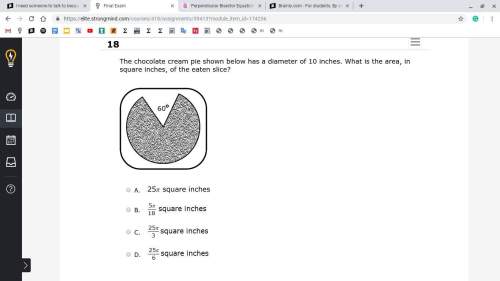
Mathematics, 22.12.2021 14:00 esperanzar3034
8. Given: A(3,-2); B(8, -2); C(8, 1); D(3, 1). a. Find the slope of AB, BC, CD, DA. AR A A b. What type of a parallelogram is ABCD? Why? a c. Find the length of AB, BC C d. Is ABCD a square? he v e. Find the area of ABCD.

Answers: 2


Another question on Mathematics

Mathematics, 21.06.2019 18:30
Adoctor administers a drug to a 38-kg patient, using a dosage formula of 50 mg/kg/day. assume that the drug is available in a 100 mg per 5 ml suspension or in 500 mg tablets. a. how many tablets should a 38-kg patient take every four hours? b. the suspension with a drop factor of 10 ggt/ml delivers the drug intravenously to the patient over a twelve-hour period. what flow rate should be used in units of ggt/hr? a. the patient should take nothing pills every four hours. (type an integer or decimal rounded to the nearest hundredth as needed.)
Answers: 1

Mathematics, 21.06.2019 18:40
What value of x is in the solution set of 4x – 12 s 16 + 8x?
Answers: 3

Mathematics, 21.06.2019 21:30
Anumber cube is rolled two times in a row. find the probability it will land on 2 on the first roll and a number greater then 4 on the second roll
Answers: 1

Mathematics, 21.06.2019 22:30
What is 100,000 times 1/100,000, using the standard method of multiplication? write the answer as 10 to a power.
Answers: 1
You know the right answer?
8. Given: A(3,-2); B(8, -2); C(8, 1); D(3, 1). a. Find the slope of AB, BC, CD, DA. AR A A b. What t...
Questions


History, 14.07.2019 11:00



Mathematics, 14.07.2019 11:00



Mathematics, 14.07.2019 11:00

Mathematics, 14.07.2019 11:00





Mathematics, 14.07.2019 11:00




Computers and Technology, 14.07.2019 11:00


English, 14.07.2019 11:00




